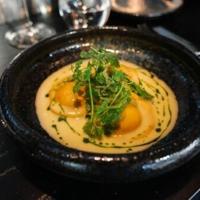In a factory in Finland, the “farmers of the future” are creating a new food protein by feeding a microbe air and electricity, demonstrating that protein can be produced without traditional agriculture.
Livestock farming is a major contributor to greenhouse gas emissions, the primary driver of global warming.
Cellular agriculture, where food or nutrients are cultivated from cell cultures, is increasingly being viewed as a sustainable alternative to animal agriculture.
Laboratory-grown meat, eggs, and milk have been making headlines recently, with scientists using animal cell cultures — a process that some criticize as unnatural, highly processed, energy-intensive, and costly.
However, at Solar Foods’ newly opened factory near Helsinki, researchers are using innovative technology to grow protein from cells using air and electricity.
By feeding a microbe with carbon dioxide, hydrogen, and some minerals, and powering the process with electricity from renewable sources, the company has successfully created a protein-rich powder that can serve as a substitute for milk and eggs.
“We can obtain our main feedstock for the microbe from the air,” stated Solar Foods chief executive Pasi Vainikka during a tour of the company’s new facilities near Helsinki.
“We have initiated the production of the most sustainable protein in the world.”
Founded by Vainikka and Juha-Pekka Pitkanen in 2017, Solar Foods unveiled the “world’s first factory growing food out of thin air” in April.
“A significant portion of the protein currently sourced from animals can actually be produced through cellular agriculture, allowing agricultural land to revert to nature and promote carbon capture,” Vainikka explained.
According to a 2021 scientific study, one kilogram of the new protein, known as “solein”, emits 130 times less greenhouse gases than the same amount of protein produced by beef production in the European Union.
In the factory’s laboratory and control room, Vainikka guided a group of individuals monitoring the production process from computer screens.
“These are our future farmers,” Vainikka remarked.
– Part of the solution –
Emilia Nordlund, head of industrial biotechnology and food research at the VTT Technical Research Centre, believes that transforming food production and consumption is critical in addressing the climate crisis and halting biodiversity loss.
Nonetheless, current projections indicate an increase in meat consumption in the coming years.
“Industrial food production, particularly livestock production, is a leading cause of greenhouse gas emissions and biodiversity loss, eutrophication, and freshwater usage,” she noted.
New food production technologies can help reduce emissions and “decentralize and diversify food production,” Nordlund added.
“However, we must also enhance existing food production methods to enhance their sustainability and resilience,” she emphasized.
Fermentation technology, which has been used for decades to produce various nutrients like proteins, has seen significant growth in recent years due to new technological advancements and research projects worldwide.
– Slow progress –
Nordlund stated that some of the most active start-up hubs focusing on cellular agriculture are located in the United States, the United Kingdom, Germany, the Netherlands, and Israel.
She emphasized that the EU’s bureaucratic barriers were hindering the progress of cellular agriculture in the region.
In protective gear to prevent bacterial contamination in the factory, Vainikka showcased a large steel tank in a bright production hall.
“This fermenter can hold 20,000 liters,” he explained, noting that the microbe multiplies inside the tank as it is fed with greenhouse gas.
The liquid containing the microbes is continuously extracted from the tank to be processed into a yellowish, protein-rich powder with flavors described as “nutty” and “creamy.”
“The fermenter can produce the same amount of protein per day as 300 milking cows or 50,000 laying hens,” Vainikka stated.
This translates to “five million meals’ worth of protein per year.”
Currently, the primary objective of the small Finnish plant with approximately 40 employees is to demonstrate the scalability of the technology to attract the necessary investments while awaiting regulatory approval in the EU.
Although the protein has been approved for sale in Singapore, where some eateries have utilized it to make ice cream, it is still awaiting classification as a food product in the EU and the United States.
To have a significant impact, the goal is to “construct an industrial plant 100 times the size of this one,” as per Vainikka’s vision.
ank/po/imm





